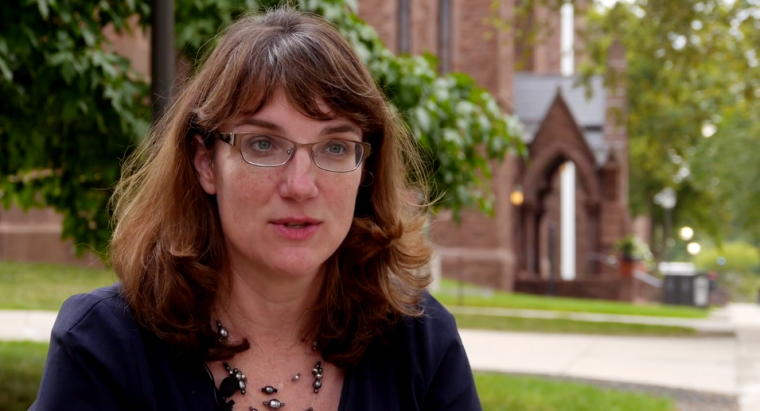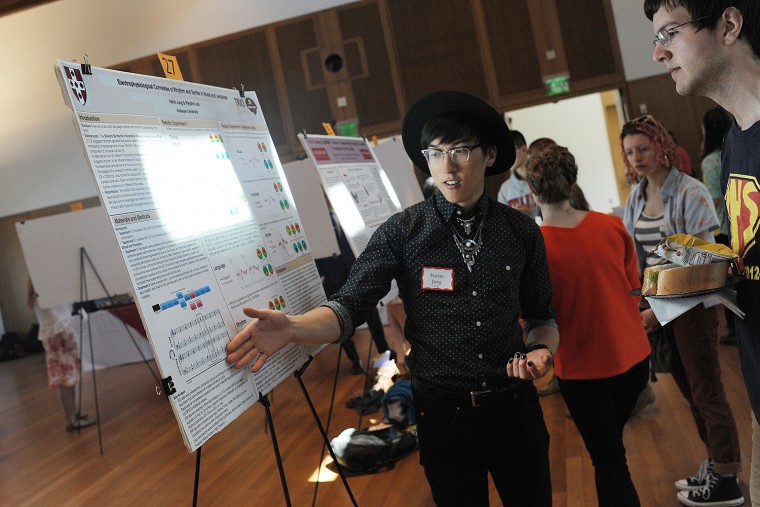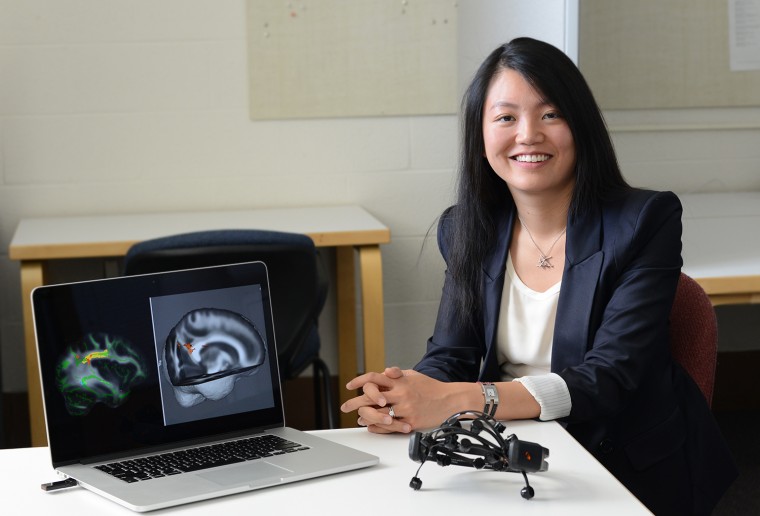Wesleyan’s Passion Driven Statistics curriculum introduces students to statistics by allowing them to ask and answer statistical questions that they care about. Funded by the National Science Foundation, the Passion Driven Statistics model has been successfully implemented through the Applied Data Analysis course at Wesleyan, created by Lisa Dierker, professor of psychology, director of pilot programs for the Center for Pedagogical Innovation. The course is taught by several faculty from Wesleyan's Quantitative Analysis Center. "What I want is for students to do when get out of this course is to encounter data in the world and say, 'I can't wait to do something with it,' and to have…
Situational judgment tests (SJTs) have become an increasingly important tool for predicting employee performance. In a recent study, Steven Stemler, associate professor of psychology, and two executives at pre-hire assessment firm Aspiring Minds asked current employees at several firms in India to review scenarios and then pick the “best” and “worst” choices from a set of options. The colleagues found a statistically significant correlation between job success and those who correctly identified the ‘worst’ answers to scenarios. Their results were surprising. "What we found in our research is that the ability to correctly identify the ‘worst’ response to a situation is a systematically different skill than the…
The new school year ushers in a wide array of emotions for both new and returning students – from feelings of excitement over leaving home for the first time among first-year students, to anxiety and nostalgia over post-graduation plans among seniors. Amidst those emotions, students will face challenges in balancing their academic workload, socializing with friends, participating in extra-curricular activities, and maintaining family relationships — all within limited financial and time constraints. As the school year progresses, it may become increasingly challenging for students to strike a healthy balance across these various aspects of their university life. The unfortunate result for…
Kindergarten Kickstart, a research-based, summer pre-K program for children in Middletown created by Associate Professor of Psychology Anna Shusterman and her students, is celebrating its fifth year. It’s marking the occasion with an event July 20 at the Middletown Roller Skating Rink (free for any current or past Kickstart family, 4 to 6 p.m.) and using a new grant to further develop student innovation in the program. Shusterman and three of her students first launched Kindergarten Kickstart in summer 2012 as a pilot program with 15 children at MacDonough School. They designed the curriculum and taught the program together with…
Hilary Barth, associate professor of psychology, and Andrea Patalano, associate professor of psychology, associate professor of neuroscience and behavior, have received a major grant from the National Science Foundation. The $1,101,456 grant will support collaborative research on quantitative reasoning conducted in the Cognitive Development Lab (directed by Barth) and the Reasoning and Decision Making Lab (directed by Patalano). The research project will be conducted in collaboration with Sara Cordes at Boston College, which will receive an additional $177,496. According to the NSF abstract, humans have an innate ability to estimate quantities yet their intuitions often contain biases that interfere with…
In its recent meeting, the Board of Trustees conferred tenure on four faculty members. They are Associate Professor of Government Erika Franklin Fowler, Professor of African American Studies Kali Gross, Associate Professor of English and American Studies Amy Tang, and Associate Professor of Chemistry Erika Taylor. They join eight other faculty members who were awarded tenure earlier this spring. One faculty member, Louise Neary, was promoted to adjunct associate professor of Spanish. In addition, six faculty members are being promoted to full professor: J. Kehaulani Kauanui, professor of American Studies and anthropology Matthew Kurtz, professor of psychology Cecilia Miller, professor of…
Forty-six thesis and research students presented 36 posters during the Psychology Research Poster Presentation April 28 in Beckham Hall. The 10th annual event allowed the students to share their research and ongoing studies with peers and faculty from the Natural Sciences and Mathematics Division. Photos of the poster presentation are below: (Photos by Olivia Drake MALS '08) (more…)
Lisa Dierker, professor of psychology, director of pilot programs for the Center for Pedagogical Innovation, and Ishita Mukerji, the Fisk Professor of Natural Science, professor of molecular biology and biochemistry, professor of integrative sciences, were both honored at the 12th annual Women of Innovation Awards. Presented by the Connecticut Technology Council, the awards celebrate the energy, creativity and success of women and students from Connecticut's science and technology community. Both professors were honored in the category of Academic Innovation and Leadership. The celebration was held April 6 in Plantsville, Conn. Dierker was honored for her work developing a curriculum to introduce students to…
This fall, Wesleyan will welcome to campus its third cohort of Posse Veteran Scholars in the Class of 2020—a group of three women and seven men who have served in all branches of the U.S. Armed Forces. They come from all over the United States and have served in places such as Afghanistan, Uganda and Iraq. Their interests range from visual art and filmmaking to teaching and mathematics. One student, Marisella Andrews, is the great-granddaughter of a Wesleyan alumnus, Matias Perez, from the Class of 1917. The group's faculty mentor will be Jill Morawski, the Wilbur Fisk Osborne Professor of Psychology, professor and…
Several Wesleyan students presented research at the Eastern Psychological Association's 2016 Annual Meeting in New York, N.Y. on March 4. Sheri Reichelson '16 presented a poster titled "Does the Arbitrary Grouping of Physical Options Influence Children's and Adults' Choices?" Reichelson received an Eastern Regional travel grant from the Psi Chi Grants Committee and Boards of Directors to fund her travel. She also is an accepted BA/MA student continuing her work next year in Wesleyan's Cognitive Development Labs under the supervision of Hilary Barth, associate professor of psychology. Reichelson's research, an ongoing collaborative project between the Cognitive Development Labs and the Reasoning and…
Assistant Professor of Psychology Psyche Loui has long been interested in studying the intersection of music and emotions. In her latest study, published March 10 in Social, Cognitive, and Affective Neuroscience, she identified specific connections in the brain between the auditory processing regions and regions for social and emotional processing. The article is titled, "Brain connectivity reflects human aesthetic responses to music." Loui, who also is assistant professor of neuroscience and behavior, assistant professor of integrative sciences, has previously studied how music can cause chills, or similar strong physiological reactions in people when listening to music. Together with former thesis student…
Four Wesleyan academic departments, from psychology to dance to chemistry to biology, are competing for grant funds through a new crowdfunding site specifically designed for research project fundraising. Experiment.com's Challenge Grant for Liberal Arts Colleges asked scientists to define a scientific research question for the crowd with a prize for the project with the most backers. The pilot launched on Feb. 24 and concludes March 25.During this 31-day period, the goal is to reach $4,000 in funding. If so, the team is granted the money. If not, they receive nothing and no one's pledges are charged. By backing a project, participants will receive updates, results and data from project creators. Wesleyan research include how the…










